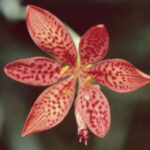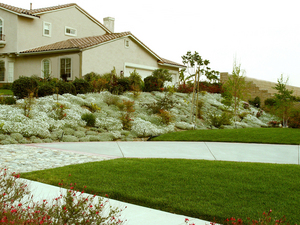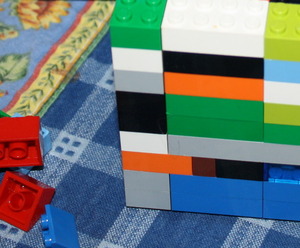Daylilies are very practical plants to grow in the garden. Not only are they beautiful but they are quite hardy and can withstand disease and drought. They certainly pass my garden test. Since I work and do not have the time to fuss with delicate and demanding flowers, any plant that cannot grow with a certain amount of neglect does not belong. Daylilies are among the least demanding flowering plants I know.
Daylilies are perennials that grow up every year, making them very easy to care for after the initial planting. Each plant produces several flowers for a short period of time during the growing season. Some varieties like Stella d’Oro will bloom throughout the summer. The plants have broad, leafy foliage sprouting from ground level with multiple stems, each producing a cluster of showy flowers. The flowers come in yellows, pinks, reds, and purples and grow in different heights, shapes and textures, all characteristics that can lend themselves to remarkably varied garden designs. The most common daylily is the traditional orange variety seen in many gardens and even along roads. When not in bloom, the foliage is green and dense and will not permit weeds to grow through them.
Here are some ideas for using daylilies in designing gardens and landscapes.
1. Along borders. Daylilies make excellent borders along pathways and fences and against rock walls. Taller plants add color to cedar hedge backdrops. Shorter ones such as the Stella d’Oro, look lovely along the border of the garden.
2. As a hedge. They can be planted as a low hedge along the property, for example as a border along a path to a park or as a dividing line between two properties. The hedge will last most of the summer since the leaves last well after blooming has ended.
3. As ground cover. Daylilies are especially functional in areas where other flowering plants have a hard time to grow. Their dense foliage can cover uneven terrain, stones, tree stumps and roots, and a multitude of other sins.
4. In a mixed flower garden. Single clumps can be intermingled with other perennials to make pleasing combinations of colors and textures. You can try combining them with evening primrose, phlox or a soft feathery flower or shrub like spirea. Pansies or violets peeking out from beneath their leaves are charming.
5. On their own. An attractive daylily garden can be created by arranging clumps of different colors and heights to make interesting patterns. One memorable daylily garden was designed as an oval situated in the middle of an expanse of deep green lawn. The daylilies were selected so that tall plants with bright yellow flowers were placed in the center with shorter plants in oranges, pale yellows and burgundies growing along the perimeter. The effect was dramatic, especially against the backdrop of the lawn.
6. Against the house. The common orange daylilies growing against a quaint cottage add a traditional touch, softening the edges of the building and making it appear even more restful and inviting. Since they are low maintenance, time is freed up to relax and enjoy the fresh air and good times.
All in all, daylilies are an excellent addition to any garden providing color and variety without a lot of work.







